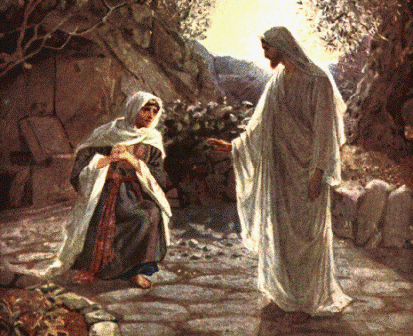
“Now when he rose early on the first day of the week, he appeared first to Mary Magdalene, from whom he had cast out seven demons. She went and told those who had been with him, as they mourned and wept. But when they heard that he was alive and had been seen by her, they would not believe it.
After these things he appeared in another form to two of them, as they were walking into the country. And they went back and told the rest, but they did not believe them.
Afterward he appeared to the eleven themselves as they were reclining at table, and he rebuked them for their unbelief and hardness of heart, because they had not believed those who saw him after he had risen. And he said to them, “Go into all the world and proclaim the gospel to the whole creation. Whoever believes and is baptized will be saved, but whoever does not believe will be condemned. And these signs will accompany those who believe: in my name they will cast out demons; they will speak in new tongues; they will pick up serpents with their hands; and if they drink any deadly poison, it will not hurt them; they will lay their hands on the sick, and they will recover.”
So then the Lord Jesus, after he had spoken to them, was taken up into heaven and sat down at the right hand of God. And they went out and preached everywhere, while the Lord worked with them and confirmed the message by accompanying signs. (Mark 16:9-20)
Comments:
This passage in Mark 16 is often put in parenthesis because it is not in some of the earliest manuscripts. I have addressed this concern in a previous post on our Bible Answers blog so I won’t expand on it here.
What we find in this passage is like a brief (that is in Mark’s Dragnet “just-the-facts” style), and early harmony of resurrection experiences (John 20, Luke 24) and missionary narratives (Acts). We can see four different sections:
 |
| Garden Tomb, Jerusalem |
Appearance to the 11 where the Great Commission was given (v. 14-18). This section briefly sums up Matthew 28:18-20 and possibly Acts 1:8. They were commanded to go into the entire world as witnesses of the gospel (v.15) and those who would believe their message would be saved. Interestingly, they had two episodes of their own unbelief in response to the testimony of others, so perhaps they would be more patient and understanding when they themselves were not believed. What is unique in Mark's account is the list of signs that would “accompany those who believe.” They would deliver people from demonic influence, they would speak in new tongues, they would lay hands on the sick and they would recover. All of these activities have a lot of biblical support. It is the snakes and the poison part that has become a euphemism for ignorant hillbilly Christianity. Admittedly, much goofy and dangerous theology has been based on one clause of verse 18 (despite violating all orthodox principles of interpretation). However this was not a prescriptive verse telling people to pick up snakes, but descriptive of God’s protection of his witnesses in their travels. While it may be alluding to such OT passages as Numbers 21 and Jeremiah 8:17, it certainly hearkens back to previous teachings of Jesus about their conflict with the forces of evil (Luke 10:18-20) and looks forward to experiences like that of St. Paul on Malta (Acts 28:3-6). The gist of this section is that when you believe and testify to it, stuff will happen that causes people to glorify God.
The Ascension and Their Response (v. 19-20).
 |
| John Singleton Copley, Public domain, via Wikimedia Commons |
So what is our testimony? How do we see the Lord working with us today?



I want to see that sermon from 35 years ago!! I love your sermons!! They're a blessing to us both! :)
ReplyDeleteThanks for asking. Some of the notes are found in the very next post... the final post in the journey through Mark. https://thedragnetgospel.blogspot.com/2021/04/mark-161-20-what-am-i-supposed-to-do.html
ReplyDelete